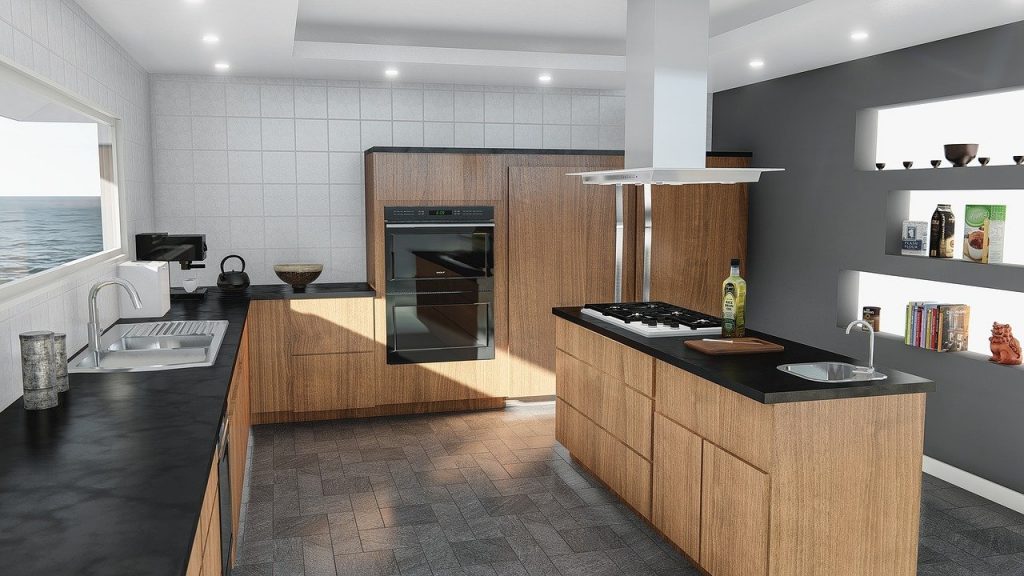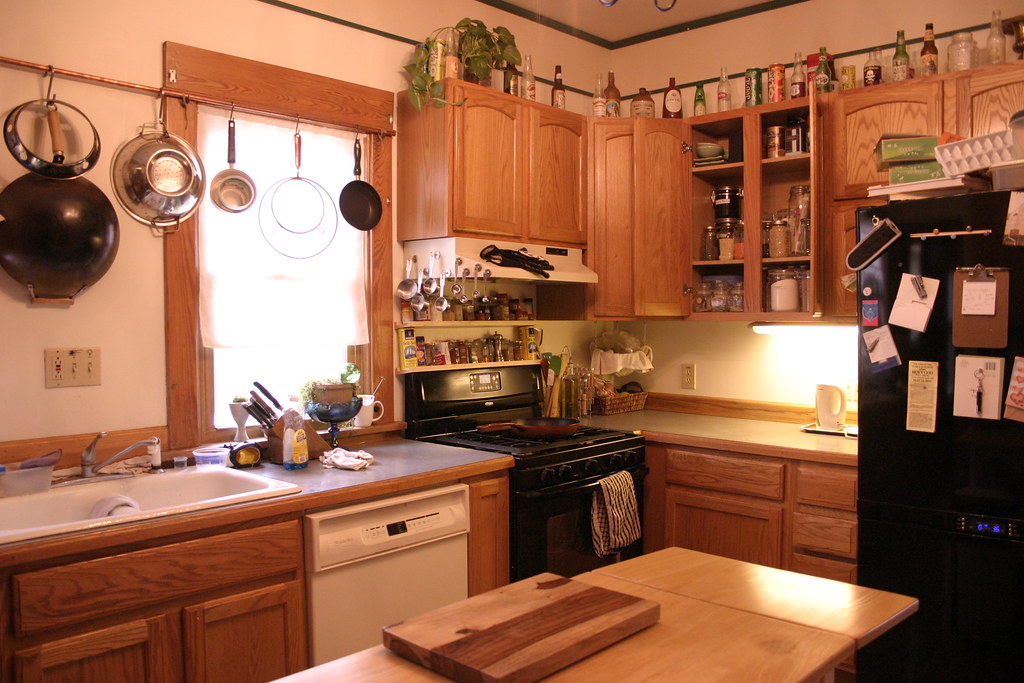Kitchen cabinets need to be cleaned regularly and thoroughly, but many people do not like doing it. Without a doubt, cleaning the kitchen is one of the most unpleasant and tiresome household chores. It has been said that this work should be done every week. As you know, once you start cleaning something, it doesn’t take long before you end up doing it all.
Cleaning the kitchen cabinets is no exception to this rule. When you start getting rid of cooking remains and sticky stains, you clean everything from the cupboards and shelves to the pantry and counters. There’s a good reason for this: Our kitchen will soon look like a disaster area if you neglect your cleaning tasks. And nobody wants that, not even you.
However, despite having already clarified how important it is to clean both your cabinets and your whole kitchen, as well as why now let’s see how you can do just that without having to exert too much effort or spend too much time on it. Let’s check out five proven ways to clean those sticky wood kitchen cabinets.
1) Use lemon and salt to clean your wood cabinets
This is by far one of the quickest and most effective ways. However, please keep in mind that this method should not be used on natural wood cabinets or those finished with a water-based product. If you want to make sure a specific type of cabinet can be treated using this solution.
The first thing you need to do is cut half a lemon into thin slices without peeling it off. From here on out, all you need to do is spread these slices around your sticky cabinets as well as inside your pantry by placing them there directly from the bag they’re usually sold in.
2) Use vinegar and baking soda to clean your wood cabinets
This is another easy cleaning solution for sticky wooden kitchen cabinets. You need to mix 1 cup of water, two tablespoons of white distilled vinegar, and 2 tablespoons of baking soda to work it out. Mix them all up well until they have been appropriately combined.
After that, just spread the mixture over the surface areas where residue has accumulated and let it sit there for approximately 10 minutes before rinsing it off with a wet sponge. If you want an even more powerful cleansing product, one which you can also use on glossy or painted surfaces, try the following method instead.
3) Use lipstick remover to clean your wood cabinets
You can find solid lipstick in almost any store, regardless of whether you’re in clothing or makeup one. From here on out, all you need to do is apply the lipstick directly to the stained area and leave it there for about 10 minutes. After that time has passed, remove this mixture using a wet sponge and a couple of drops of dishwashing liquid.
4) Use nail polish remover to clean your wood cabinets
Nail polish comes in varying degrees of strength, depending on how quickly it dries. Some have been created especially for artificial nails, while others were designed for people who want their fingernails protected from breaking when they’re playing sports. In any case, if you decide to try out this method, please be sure to stay away from the ones that have acetone in them.
What you need to do is use a cotton swab or a Q-tip to apply nail polish remover directly to the stained part of your cabinet. Dealing with wood stains can be tricky, but if you keep these simple tips in mind, you will manage to clean sticky cabinets without making things difficult for yourself. So, stop wasting time and energy; start cleaning your kitchens but only after reading this article.
5) White vinegar and hot water
The solution here is to use white vinegar and hot water to make short work of the problem. Not only will it get rid of leftover food scraps, spit splatters, oil spots, and grime, but it will also leave a lovely shine behind.
What You Need:
- Water
- Two tablespoons baking soda
- 1 cup white vinegar
- Three drops of dishwashing liquid (optional)
- Paper towel or clean clothes for drying
Easy Methods
Mix 2 cups of warm water with two tablespoons of white vinegar and one tablespoon of baking soda.
Add 3-4 drops of liquid dishwashing soap for extra grease-cutting power if needed (if you use too much, it can leave a gritty residue on your cabinets, so just start slow). Make sure the mixture is more than enough to cover your cabinets, then clean them off with a paper towel or clean cloths. They should be left looking beautiful. If you’re short on time, leave this mixture overnight before wiping it off.

Step 1:
An essential first step is to remove all contents from your kitchen cabinets, drawers, and shelves to not accidentally spill anything. Remove items carefully so you don’t damage anything, especially if you are cleaning old cabinets. Try not to use harsh chemicals when removing stains or spills, but if your cabinet doors are in excellent condition, you should use a small amount of dishwashing liquid on an old toothbrush.
Read More;https://postrules.com/basement-remodel-cost/
Step 2:
After this, start spraying the vinegar and water mixture all over your kitchen cabinets and allow to soak for 30 minutes before wiping dry. This will help loosen dirt and grime, which will make things easier for the next steps.
Step 3:
After letting the vinegar mixture sit, clean off any remaining food particles with a soft cloth and warm water (you might want to wear gloves for this part as it can irritate the skin). Wipe down any stainless steel fittings and knobs with a clean paper towel to make them shine.
Step 4:
If there are any stains or marks that have been left behind, they can be removed using a little bit of dishwashing liquid on an old toothbrush. To remove stubborn build-up, you can also use a damp cloth with some baking soda to rub in small circles. Rinse off thoroughly after allowing it to sit for 5 minutes, then wipe dry.
Step 5:
You can now put your kitchen cabinets back together again. Ensure they are scorched before adding items back in so you don’t damage anything by adding watermarks.
Make a cleaning solution with 1 part baking soda, 2 parts warm water, and 1 part lemon juice. Spray the mixture over the kitchen cabinets after adding it to a spray bottle. Allow the baking soda to do its job for 2 to 3 minutes. Scrub the grease away with the soft sponge in a gentle manner.
Why are my wood kitchen cabinets sticky?
If you’ve noticed that your wooden kitchen cabinets are feeling sticky or tacky to the touch, there are several potential reasons why this might be happening. One possible cause is a buildup of grease or other cooking residue on the cabinet surfaces. Over time, these oils and fats can accumulate, creating a sticky, hard-to-clean film on the wood. To fix this issue, try wiping your cabinets with warm water, mild dish soap, or a mixture of vinegar and water. Rinse the cabinets thoroughly and dry them with a clean cloth.
Another reason why your wood kitchen cabinets might be sticky is due to humidity or moisture. If the air in your kitchen is particularly humid, it can cause the wood to absorb excess moisture and become swollen or warped. This can create a sticky feeling on the surface of the cabinets. To remedy this, consider using a dehumidifier in your kitchen or installing proper ventilation to reduce humidity levels.

